Related Research Articles

Earl of Longford is a title that has been created twice in the Peerage of Ireland.

Baron Lyttelton is a title that has been created twice in Peerage of Great Britain, both times for members of the Lyttelton family. Since 1889 the title has been a subsidiary title of the viscountcy of Cobham.

Marquess Conyngham, of the County of Donegal, is a title in the Peerage of Ireland. It was created in 1816 for Henry Conyngham, 1st Earl Conyngham. He was the great-nephew of another Henry Conyngham, 1st Earl Conyngham, a member of a family of Scottish descent which had settled during the Plantation of Ulster in County Donegal in Ireland in the early 17th century. The 'founder' of the dynasty in Ireland was The Very Rev. Dr. Alexander Cunningham, Dean of Raphoe. The earlier Henry was a member of both the Irish House of Commons and the British House of Commons and served as Vice-Admiral of Ulster and as Governor of the counties of Donegal and Londonderry. In 1753 he was raised to the Peerage of Ireland as Baron Conyngham, of Mount Charles in the County of Donegal, and in 1756 he was created Viscount Conyngham, in Ireland, also in the Peerage of Ireland. In 1781 he was made Baron Conyngham, of Mount Charles in the County of Donegal, with remainder to his nephew Francis Burton, and Earl Conyngham, of Mount Charles in the County of Donegal, which like the creations of 1753 and 1756 was created with normal remainder to the heirs male of his body. The latter titles were also in the Peerage of Ireland. Lord Conyngham was childless and on his death in 1781 the barony of 1753, the viscountcy and earldom became extinct while he was succeeded in the barony of 1781 according to the special remainder by his aforementioned nephew Francis. He was the eldest son of Mary, sister of the first Earl Conyngham, by her husband Francis Burton. The new 2nd Baron Conyngham, who had earlier represented Killybegs and County Clare in the Irish House of Commons, assumed by Royal licence the surname and arms of Conyngham on succeeding to the titles.

Earl Talbot is a title that has been created twice in the Peerage of Great Britain. This branch of the Talbot family descends from the Hon. Sir Gilbert Talbot, third son of John Talbot, 2nd Earl of Shrewsbury. His great-great-great-grandson, the Right Reverend William Talbot, was Bishop of Oxford, of Salisbury and of Durham. His eldest son Charles Talbot was a prominent lawyer and politician. In 1733, he was raised to the Peerage of Great Britain as Lord Talbot, Baron of Hensol, in the County of Glamorgan, and then served as Lord High Chancellor of Great Britain from 1733 to 1737.

Earl of Kingston is a title in the Peerage of Ireland. It was created in 1768 for Edward King, 1st Viscount Kingston. The Earl holds the subsidiary titles Baron Kingston, of Rockingham in the County of Roscommon, Viscount Kingston, of Kingsborough in the County of Sligo, Baron Erris, of Boyle in the County of Roscommon, and Viscount Lorton, of Boyle in the County of Roscommon, also in the Peerage of Ireland. He is also a baronet in the Baronetage of Ireland. Between 1821 and 1869 the earls also held the title Baron Kingston, of Mitchelstown in the County of Cork, in the Peerage of the United Kingdom.

Earl of Powis (Powys) is a title that has been created three times. The first creation came in the Peerage of England in 1674 in favour of William Herbert, 3rd Baron Powis, a descendant of William Herbert, 1st Earl of Pembroke. In 1687, he was further honoured when he was made Marquess of Powis.

Earl Howe is a title that has been created twice in British history, for members of the Howe and Curzon-Howe family respectively. The first creation, in the Peerage of Great Britain, was in 1788 for Richard Howe, but became extinct on his death in 1799. The second creation, in the Peerage of the United Kingdom was in 1821 for Richard Curzon, and remains extant.

Earl of St Germans, in the County of Cornwall, is a title in the Peerage of the United Kingdom held by the Eliot family that takes its name from the village of St Germans, Cornwall. It has the subsidiary title Baron Eliot. The family seat is Port Eliot.
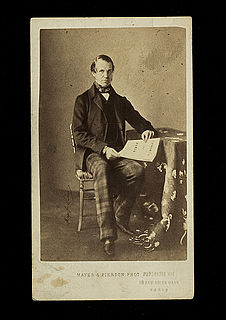
Earl Cowley is a title in the Peerage of the United Kingdom. It was created in 1857 for the diplomat Henry Wellesley, 2nd Baron Cowley. He was Ambassador to France from 1852 to 1867. He was made Viscount Dangan, of Dangan in the County of Meath, at the same time as he was given the earldom. This title is also in the Peerage of the United Kingdom. Lord Cowley was the eldest son of Henry Wellesley, 1st Baron Cowley, who like his son served as Ambassador to France. In 1828 he was created Baron Cowley, of Wellesley in the County of Somerset, in the Peerage of the United Kingdom. A member of the prominent Wellesley family, Cowley was the fifth and youngest son of Garret Wellesley, 1st Earl of Mornington, and the younger brother of Arthur Wellesley, 1st Duke of Wellington, and Richard Wellesley, 1st Marquess Wellesley.
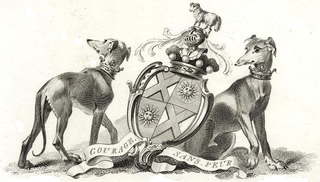
Viscount Gage, of Castle Island in the County of Kerry of the Kingdom of Ireland, is a title in the Peerage of Ireland. It was created in 1720 for Thomas Gage, along with the subsidiary title of Baron Gage, of Castlebar in the County of Mayo, also in the Peerage of Ireland. In 1744 he also succeeded his cousin as eighth Baronet, of Firle Place. The titles remain united. The Gage family descends from John Gage, who was created a baronet, of Firle Place in the County of Sussex, in the Baronetage of England on 26 March 1622. His great-grandson, the seventh Baronet, represented Seaford in Parliament. He was succeeded by his first cousin, Thomas Gage, 1st Viscount Gage, the eighth Baronet. He sat as a Member of Parliament for Minehead and Tewkesbury and also served as Governor of Barbados. In 1720, 24 years before succeeding in the baronetcy, he was raised to the Peerage of Ireland as Baron Gage and Viscount Gage. His second son was the military commander the Hon. Thomas Gage.
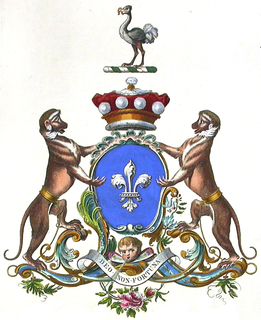
Baron Digby is a title that has been created twice, once in the Peerage of Ireland and once in the Peerage of Great Britain, for members of the same family.

Baron Rossmore, of Monaghan in the County of Monaghan, is a title in the Peerage of Ireland. It was created in 1796 for the soldier Robert Cuninghame, with remainder to his wife Elizabeth's nephews Henry Alexander Jones and Warner William Westenra, son of Henry Westenra and Harriet Murray, youngest sister of Elizabeth. Cuninghame was a General in the Army and served as Commander-in-Chief of Ireland. From January to August 1801 he also sat in the House of Lords as an Irish Representative Peer.
Baron de Freyne, of Coolavin in the County of Sligo, is a title in the Peerage of the United Kingdom. It was created in 1851 for Arthur French, 1st Baron de Freyne, with remainder to his younger brothers John, Charles and Fitzstephen French. He had earlier represented County Roscommon in the House of Commons and later served as Lord Lieutenant of County Roscommon. French had already been created Baron de Freyne, of Artagh in the County of Roscommon, in 1839, also in the Peerage of the United Kingdom but with normal remainder to heirs male. Lord de Freyne was childless and on his death in 1856 the barony of 1839 creation became extinct. The barony of 1851 creation survives according to the special remainder by his younger brother John, the second Baron.

Earl Cowper was a title in the Peerage of Great Britain. It was created in 1718 by George I for William Cowper, 1st Baron Cowper, his first Lord Chancellor, with remainder in default of male issue of his own to his younger brother, Spencer Cowper. Cowper had already been created Baron Cowper of Wingham in the County of Kent, in the Peerage of England on 14 December 1706, with normal remainder to the heirs male of his body, and was made Viscount Fordwich, in the County of Kent, at the same time as he was given the earldom, also Peerage of Great Britain and with similar remainder. He was the great-grandson of William Cowper, who was created a Baronet, of Ratling Court in the County of Kent, in the Baronetage of England on 4 March 1642. The latter was succeeded by his grandson, the second Baronet. He represented Hertford in Parliament. He was succeeded by his eldest son, the aforementioned William Cowper, the third Baronet, who was elevated to the peerage as Baron Cowper in 1706 and made Earl Cowper in 1718. In 1706 Lord Cowper married as his second wife Mary Clavering, daughter of John Clavering, of Chopwell, County Durham.
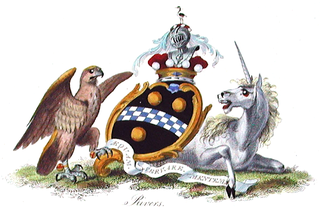
Baron Rivers was a title that was created four times in British history, twice in the Peerage of England, once in the Peerage of Great Britain and once in the Peerage of the United Kingdom.
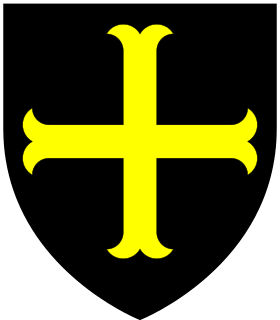
Viscount Templetown, in the County of Antrim, was a title in the Peerage of Ireland. It was created on 13 February 1806 for John Upton, 2nd Baron Templetown, Member of Parliament for Bury St Edmunds. He was the son of Clotworthy Upton, who served as Clerk Comptroller to Augusta, Dowager Princess of Wales. On 3 August 1776 he had been raised to the Peerage of Ireland as Baron Templetown, of Templetown in the County of Antrim. The first Viscount was succeeded by his eldest son, the second Viscount. He never married and on his death the titles passed to his younger brother, the third Viscount. He was a General in the Army and also sat as Conservative Member of Parliament for County Antrim from 1859 to 1863. Between 1866 and 1890 Lord Templetown sat in the House of Lords as an Irish Representative Peer. He was succeeded by his nephew, the fourth Viscount. He was the son of the Honourable Edward John Upton, fourth son of the first Viscount. Lord Templetown was an Irish Representative Peer from 1894 to 1939. His eldest son was killed in the First World War and he was succeeded by his second and only surviving son, the fifth Viscount. He was for many years a member of the county council of the Stewartry of Kirkcudbright. He had one son, who predeceased him, and one daughter, who survived him. On his death in 1981 without a male heir, his titles became extinct.
The High Sheriff of Roscommon was the British Crown's judicial representative in County Roscommon, Ireland from 1575 until 1922, when the office was abolished in the new Free State and replaced by the office of Roscommon County Sheriff. The sheriff had judicial, electoral, ceremonial and administrative functions and executed High Court Writs. In 1908, an Order in Council made the Lord-Lieutenant the Sovereign's prime representative in a county and reduced the High Sheriff's precedence. However the sheriff retained his responsibilities for the preservation of law and order in the county. The usual procedure for appointing the sheriff from 1660 onwards was that three persons were nominated at the beginning of each year from the county and the Lord Lieutenant then appointed his choice as High Sheriff for the remainder of the year. Often the other nominees were appointed as under-sheriffs. Sometimes a sheriff did not fulfil his entire term through death or other event and another sheriff was then appointed for the remainder of the year. The dates given hereunder are the dates of appointment. All addresses are in County Roscommon unless stated otherwise.
Henry Moore Sandford, 1st Baron Mount Sandford, was an Irish landowner and politician.
George Sandford, 3rd Baron Mount Sandford, was an Irish politician.

Earl of Arran is a title in the Peerage of Ireland. It is not to be confused with the title Earl of Arran in the Peerage of Scotland. The two titles refer to different places: the Aran Islands in Ireland, and the Isle of Arran in Scotland. The Irish earldom is held by the Gore family. The Scottish earldom is a separate title, held as a subsidiary title of the Duke of Hamilton.
References
- Leigh Rayment's Peerage Pages [ self-published source ][ better source needed ]
- John Burke. A General and Heraldic Dictionary of the Peerage and Baronetage of the British Empire: Volume II.